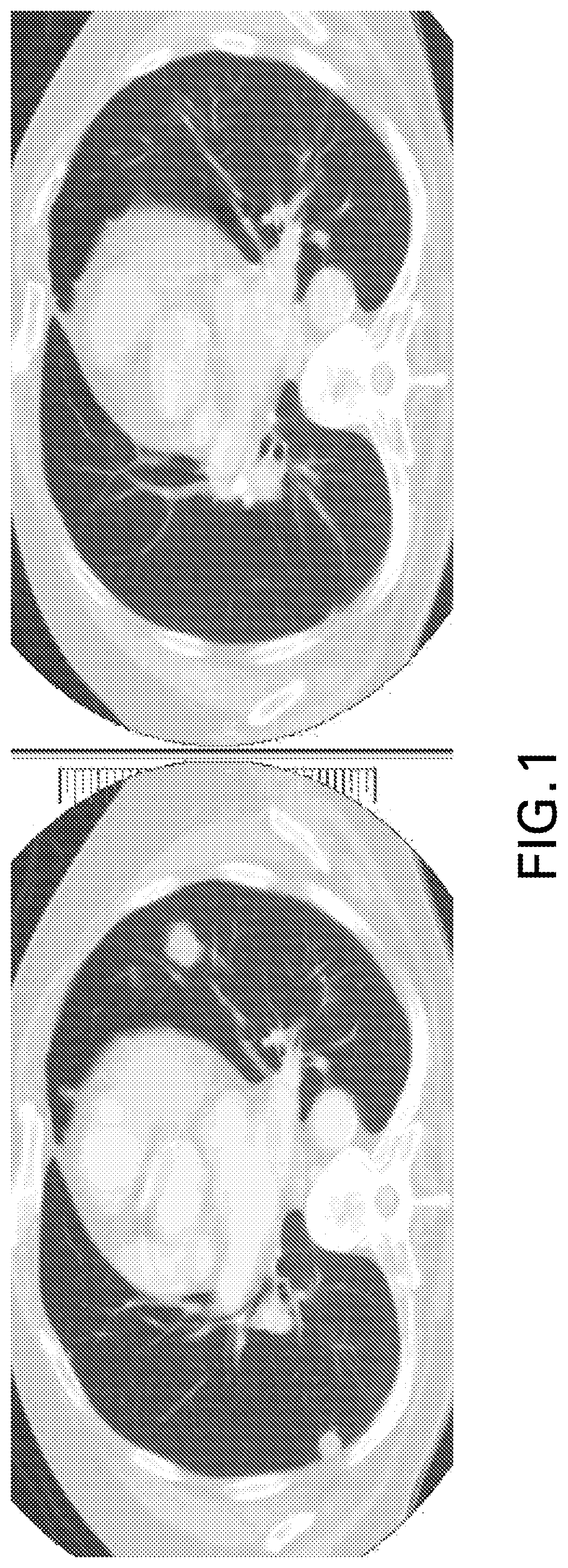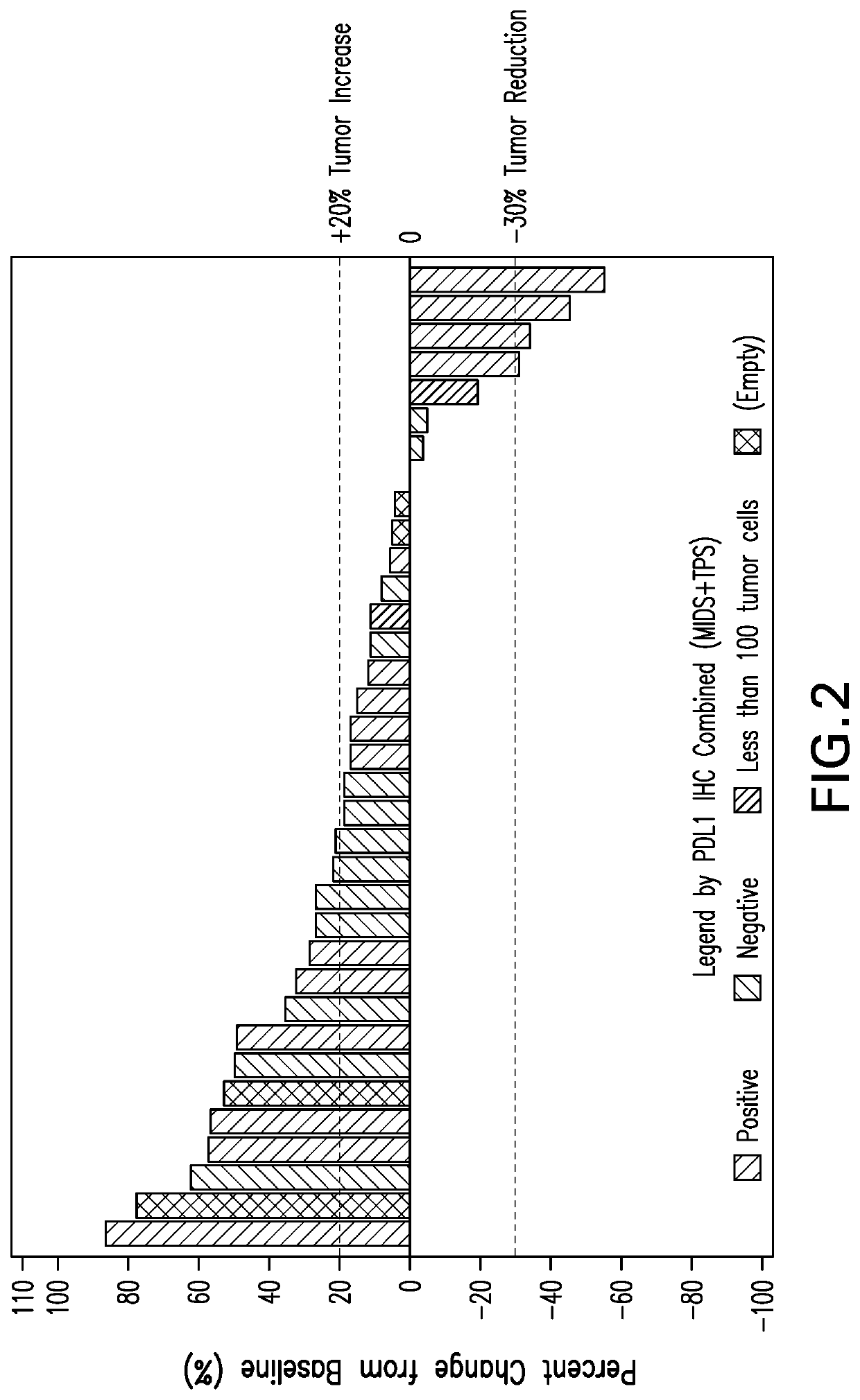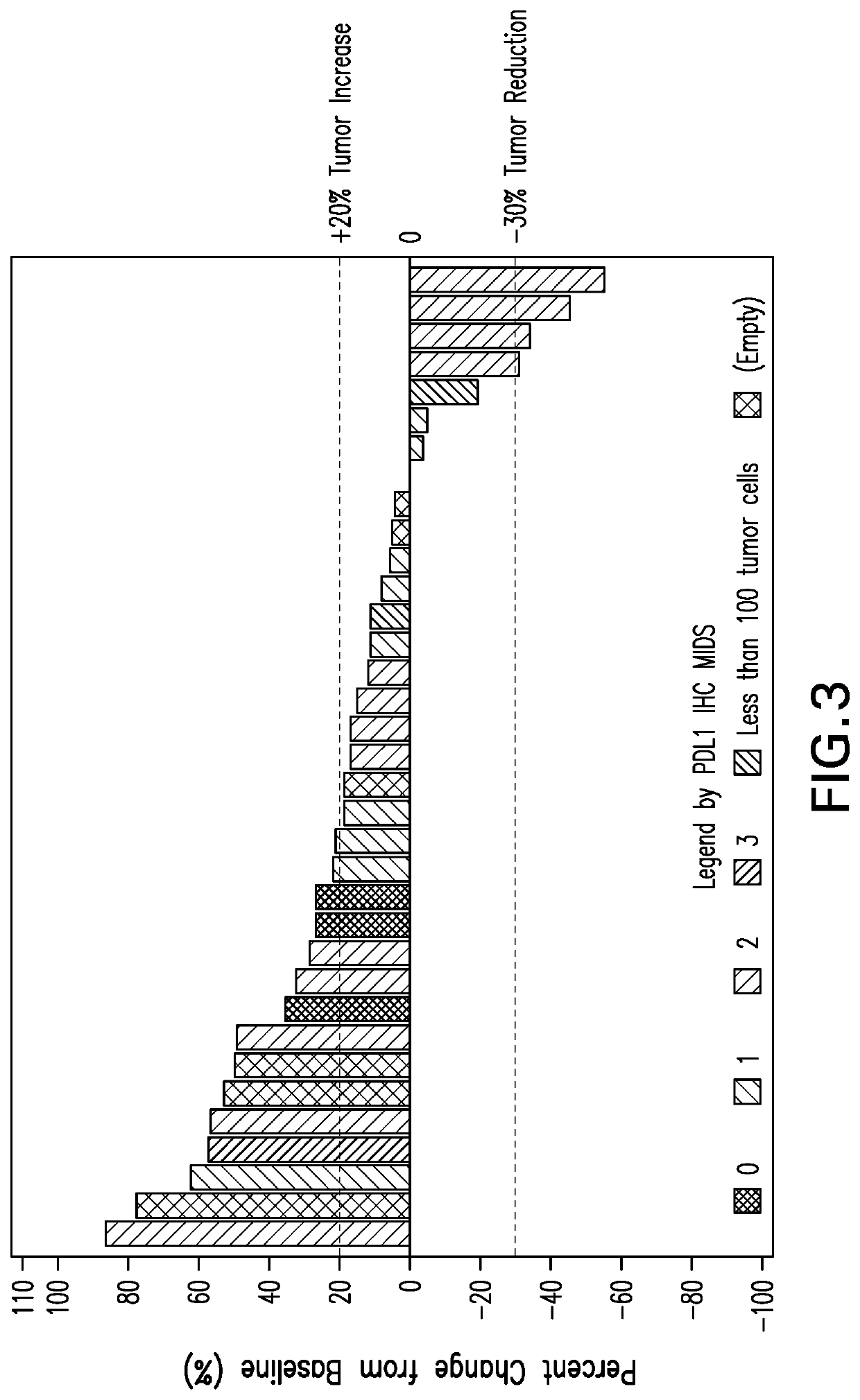Combination therapy of a pd-1 antagonist and lag3 antagonist for treating patients with non-microsatellite instability-high or proficient mismatch repair colorectal cancer
a technology of colorectal cancer and pd-1, which is applied in the field of combination therapy, can solve the problems of limited treatment options for heavily pretreated patients beyond the second-line setting, severe associated toxicities, and limited clinical benefi
- Summary
- Abstract
- Description
- Claims
- Application Information
AI Technical Summary
Benefits of technology
Problems solved by technology
Method used
Image
Examples
example 1
Clinical Studies of Anti-LAG3 Antibody in Advanced Solid Tumors
[0210]This is a multisite, open-label, dose-escalation study of anti-LAG3 antibody Ab6 monotherapy (Part A, Arm 1) and Ab6 in combination with pembrolizumab (Part A, Arm 2) followed by both nonrandomized and randomized dose confirmation of Ab6 in combination with pembrolizumab along with efficacy evaluations of Ab6 as monotherapy and in combination with pembrolizumab (Part B) in subjects with a histologically or cytologically confirmed diagnosis of advanced solid tumors.
[0211]During Part A of the study, subjects were allocated by nonrandom assignment to 1 of 2 treatment arms:[0212]Arm 1: Ab6 as monotherapy escalating doses 7, 21, 70, 210 or 700 mg every 3 weeks (Q3W) via intravenous infusion (IV).[0213]Arm 2: Ab6 escalating doses 7, 21, 70, 210 or 700 mg every 3 weeks (Q3W) IV in combination with pembrolizumab (200 mg Q3W) IV
Part B was a dose confirmation of Ab6 in combination with pembrolizumab. Additionally, expansion ...
example 2
Measurement of PD-L1 Expression Levels
[0245]Specimens from non-MSI-H colorectal cancer patients of Part B were analyzed prior to treatment. Specimens for analysis are formalin-fixed and paraffin-embedded (FFPE) tissue sections. The IHC staining for PD-L1 expression was performed using the Dako Autostainer Link 48 platform (Dako AS480) and an automated staining protocol validated for the PD-L1 IHC 22C3 pharmDx assay according to US 2017 / 0285037, incorporated by reference in its entirety. The Waterfall plot of subjects with best target lesion change from baseline is shown in FIGS. 2 and 3.
[0246]FIG. 2 shows that 53% of CRC tumors in this set using the CPS scoring system are PD-L1 positive. Of the PD-L1+tumors, 4 out of 15 are responders (27%). Of the PD-L1−tumors, 0 out of 13 are responders (0%). FIG. 3 shows that using a MIDS scoring system of at least 2, of the PD-L1+tumors, 4 out of 14 are responders (28%). Of the PD-L1−tumors with a MIDS score of less than 2, 0 out of 11 are respo...
PUM
| Property | Measurement | Unit |
|---|---|---|
| Mass | aaaaa | aaaaa |
| Time | aaaaa | aaaaa |
| Density | aaaaa | aaaaa |
Abstract
Description
Claims
Application Information
 Login to View More
Login to View More - R&D
- Intellectual Property
- Life Sciences
- Materials
- Tech Scout
- Unparalleled Data Quality
- Higher Quality Content
- 60% Fewer Hallucinations
Browse by: Latest US Patents, China's latest patents, Technical Efficacy Thesaurus, Application Domain, Technology Topic, Popular Technical Reports.
© 2025 PatSnap. All rights reserved.Legal|Privacy policy|Modern Slavery Act Transparency Statement|Sitemap|About US| Contact US: help@patsnap.com



